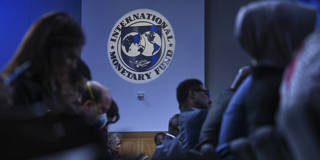Instead of bickering over the wording of national policy commitments, G7 countries should advance new issuances of special drawing rights, the International Monetary Fund’s reserve asset. By reallocating existing SDRs, rich countries could unlock funding for climate-mitigation projects across the developing world.
NEW DELHI – The United Nations Climate Change Conference (COP28) in Dubai is an opportunity to reflect on what these large, costly, and carbon-intensive international summits aim to achieve. Instead of being cynical exercises in pointless pageantry, such gatherings could serve as platforms for advancing the transformative changes required to mitigate the worst effects of today’s climate crisis.
But to achieve this, political leaders must stop bickering over the wording of national policy commitments that will take effect only in the distant future, well beyond their own tenures, and shift their focus to concrete actions that could unlock funding for climate-mitigation projects across the developing world.
Given that lower-income countries are still waiting for the relatively small amount of climate funds promised to them more than a decade ago, this may seem like a pipe dream. But even within the global economy’s current institutional framework, there are viable, low-cost ways to bolster climate finance. Special drawing rights (SDRs, the International Monetary Fund’s reserve asset) are a prime example.

NEW DELHI – The United Nations Climate Change Conference (COP28) in Dubai is an opportunity to reflect on what these large, costly, and carbon-intensive international summits aim to achieve. Instead of being cynical exercises in pointless pageantry, such gatherings could serve as platforms for advancing the transformative changes required to mitigate the worst effects of today’s climate crisis.
But to achieve this, political leaders must stop bickering over the wording of national policy commitments that will take effect only in the distant future, well beyond their own tenures, and shift their focus to concrete actions that could unlock funding for climate-mitigation projects across the developing world.
Given that lower-income countries are still waiting for the relatively small amount of climate funds promised to them more than a decade ago, this may seem like a pipe dream. But even within the global economy’s current institutional framework, there are viable, low-cost ways to bolster climate finance. Special drawing rights (SDRs, the International Monetary Fund’s reserve asset) are a prime example.